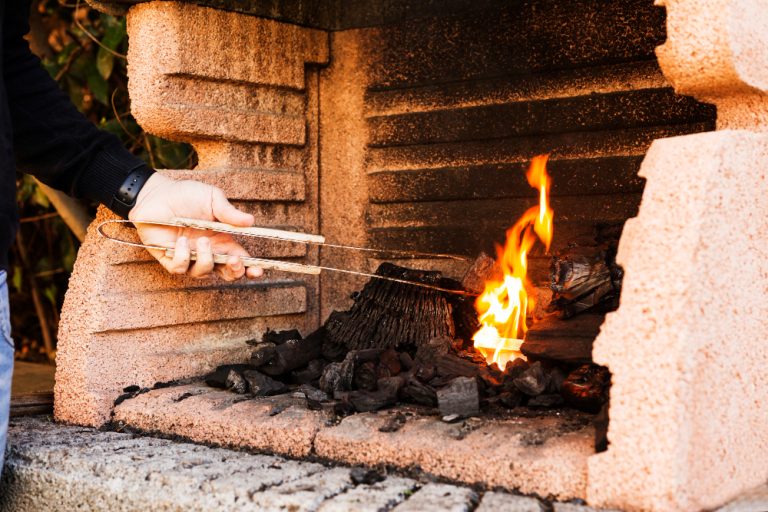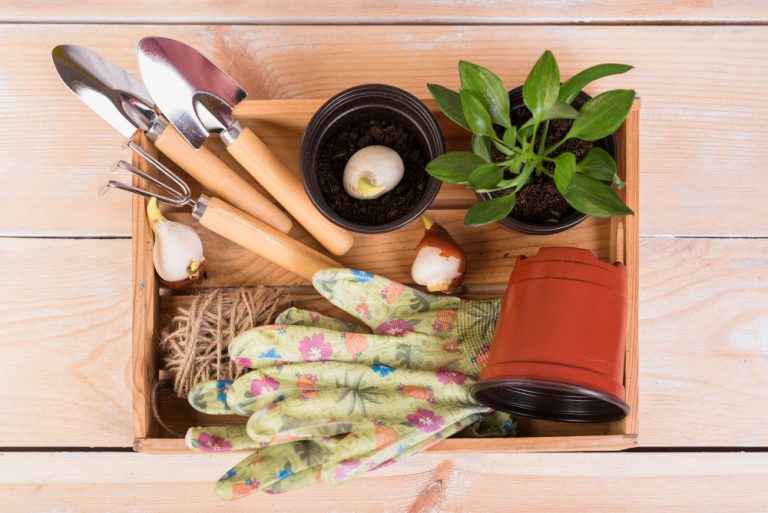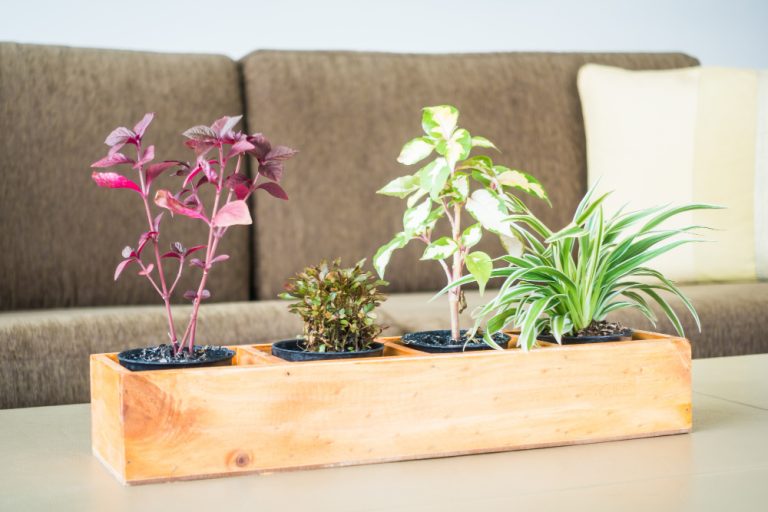Discovering creative and easy-to-build DIY raised garden bed ideas can transform your gardening experience. This guide provides inspiring designs for every skill level and budget, from simple wooden frames to modern vertical gardens. We’ll show you how to plan, build, and enjoy your own thriving raised bed garden in no time.
Tired of poor soil, weeds, and backaches from traditional gardening? You’re not alone. Many gardeners find that planting in the ground comes with frustrating limitations. Luckily, building a DIY raised garden bed is the simple, effective solution you’ve been looking for.
This guide is packed with inspiring ideas and straightforward advice to help you create a beautiful, productive, and manageable garden space. Let’s explore the best designs and first steps to bring your dream garden to life.

Why Choose a DIY Raised Garden Bed?
Gardening in the ground can be tough. You might have rocky soil or too much clay. Weeds can take over. It can also be hard on your back. A DIY raised bed fixes these problems. You control the soil mix from the start. This gives your plants a perfect home.
Raised beds warm up faster in spring. This means you can plant earlier. They also have fewer weeds and better drainage. This prevents root rot. Building it yourself saves money. It also lets you customize the size and shape for your space. You get a garden that fits your exact needs.
Creative DIY Raised Garden Bed Ideas & Designs
Let’s look at some creative ideas. There is a perfect design for every gardener.
Simple and Cheap Raised Garden Bed Ideas

You do not need a big budget to start. Use cinder blocks or bricks. They are sturdy and last a long time. You can find them at any home improvement store. Old wooden pallets are another great option. You can often find them for free.
Just make sure they are safe for gardens. Look for a stamp that says “HT,” which means they were heat-treated. You can also use fallen logs or branches. This makes a lovely rustic-looking bed. These ideas are fast, easy, and kind to your wallet.
Modern Raised Garden Bed Designs for a Stylish Yard

Make your garden a focal point. Corten steel is a popular choice. It forms a beautiful rust-colored coating that protects the metal. It is very durable and looks sleek. You can also build geometric shapes. Think hexagons or zig-zags.
Use clean-lined cedar boards for a modern feel. For a truly unique look, try building a raised bed with integrated seating. This creates a cozy spot to enjoy your garden. These designs turn your vegetable patch into a landscape feature.
Vertical and Tiered Designs for Small Spaces

Short on space? Grow up! A vertical garden is the answer. You can attach planters to a fence or wall. This is perfect for herbs and strawberries. Another idea is a tiered bed. It looks like a staircase for plants.
This design gives you more planting area in a small footprint. It also helps plants get more sun. You can build it with wood or even stack planting boxes. This approach maximizes every inch of your balcony or patio.
Landscaping with Raised Garden Beds

Your beds can define your garden. Use them to create borders along a pathway. Curve them around a tree or a sitting area. Different heights and shapes add interest.
You can mix materials too. Try stone for one bed and wood for another. This creates a structured, intentional look. The National Gardening Association is a great resource for planning your garden layout. Raised beds help you organize your space beautifully.
How to Build a Raised Garden Bed: A Step-by-Step Guide
Ready to build? It is easier than you think. Let’s walk through the process.
Choosing the Right Location and Size
Pick a spot that gets at least 6-8 hours of sun each day. Make sure it is flat and near a water source. Your bed should be no wider than 4 feet. This lets you reach the center from either side without stepping on the soil. The length is up to you. For depth, 12 to 18 inches is ideal for most vegetables. This gives roots plenty of room to grow.
Selecting the Best Materials for Longevity
Your choice of wood is important. You want something that will last.
| Wood Type | Cost | Lifespan | Pros & Cons |
|---|---|---|---|
| Cedar | High | 15-20+ years | Pros: Naturally rot-resistant, beautiful look. Cons: More expensive. |
| Pine | Low | 5-7 years | Pros: Very affordable, easy to find. Cons: Rotates quickly unless treated. |
| Composite | Very High | 20+ years | Pros: Long-lasting, no splinters. Cons: High upfront cost, can look artificial. |
Avoid old railroad ties or wood treated with arsenic. These can leak chemicals into your soil. The EPA provides guidance on safe materials for garden projects. For corners, use galvanized corner posts or sturdy brackets. This makes the structure strong.
Easy DIY Raised Garden Bed Assembly Instructions
First, cut your wood to the desired size. Lay the boards on a flat surface. Connect the corners using galvanized screws or nails. Pre-drill holes to prevent the wood from splitting. If your soil is soft, you can place the frame directly on the ground.
For extra stability, use a rubber mallet to tap corner posts into the ground. Once the frame is square and level, you are ready to fill it. Line the bottom with cardboard to smother weeds. Then, add your soil mix.
Tips for Building on a Slope
You can build a garden on a hill. The key is to create a level base. You can terrace the slope into flat steps. Another method is to build a box that follows the angle of the ground. Then, you level the soil inside the box.
This is called a “box on a slope.” It is a simple way to handle uneven ground. For more complex projects, our guide on how to level a garden has detailed steps.
Choosing the Right Design for Your Garden’s Purpose
Think about what you want to grow. Your goal will help you pick the best design. Some plants need more room than others. Some need special care. Picking the right bed design makes gardening easier and more fun.
Ideal Raised Bed Designs for Vegetable Gardens

Most vegetables need deep soil for their roots. Tomatoes, carrots, and peppers love deep beds. A standard 12 to 18-inch deep wooden frame is perfect. Make sure your bed is in a spot that gets full sun all day.
You can add trellises to the north side of the bed. This is great for climbing plants like peas, beans, and cucumbers. It saves space too. The Old Farmer’s Almanac offers excellent planting calendars for vegetables.
Designs for Herb Gardens and Flower Beds

Herbs and flowers often have shallower roots. You have more options. A small, cute bed near the kitchen door is perfect for herbs. You can use old tires, a wooden ladder, or even a wheelbarrow.
For flowers, think about height and color. A curved bed can make your yard look soft and pretty. You can plant tall flowers in the back and short ones in the front. This creates a beautiful display.
Durable Designs for Perennials and Shrubs

Perennials and shrubs come back every year. They need a strong home. Stone, brick, or corten steel beds are great choices. They last for many years and won’t rot.
Make the bed big enough for the plant to grow to its full size. This prevents crowding. Good drainage is very important for shrubs. Avoid using containers without drainage holes.
Filling and Planting Your New Raised Bed
Your bed is built. Now it is time to fill it and plant your seeds. This is the most exciting part. Doing it right will give your plants a strong start.
The Best Soil Mix for Optimal Growth
Do not use dirt from your yard. It is too heavy and might have weeds. Your plants will love a special mix. A great recipe is equal parts of three things: topsoil, compost, and a loose material like coconut coir or peat moss.
The compost feeds your plants. The loose material lets water drain and roots breathe. You can buy bags of mix or make your own. Your local university’s cooperative extension service often has great soil advice for your area.
What to Plant in Your First Season
Start with easy plants. They give you confidence. Lettuce and radishes grow very fast. Green beans and zucchini produce a lot of food. Tomatoes and peppers are popular for a reason. If you want color, try marigolds or zinnias.
They are tough and bloom all summer. Read the seed packet. It tells you when to plant and how much sun and space the plant needs.
Watering and Maintenance Tips for Raised Beds
Raised beds dry out faster than the ground. You must check the water often. Feel the soil. If the top inch is dry, it is time to water. Water deeply in the morning. This helps the roots grow strong.
Put mulch on top of the soil. Use straw, wood chips, or leaves. Mulch keeps water in and stops weeds from growing. Pull any weeds you see right away. Give your plants organic plant food every few weeks to keep them healthy.
DIY Raised Garden Bed FAQ
What is the cheapest way to make a raised garden bed?
Use free or low-cost materials. Cinder blocks are cheap. You can often find free wooden pallets. Just make sure they are safe for gardens. Look for a stamp that says “HT” for heat-treated. You can also use logs or branches from your yard.
How deep should a raised garden bed be?
12 inches is a good depth for most plants. It gives roots room to grow. For deep-rooted veggies like tomatoes or carrots, go for 18 to 24 inches. Deeper beds hold more water and need less watering.
Can you use pine for raised garden beds?
Yes, you can. Pine is cheap and easy to find. But it will rot faster than cedar. A pine bed might last 5 to 7 years. You can make it last longer by lining the inside walls with plastic. This keeps the wood dry.
Do I need a bottom for my raised garden bed?
Usually, no. An open bottom is best. It lets worms come in and water drain out. If you are worried about weeds or pests, use a layer of cardboard at the bottom. It will block weeds but break down over time.
How do I keep pests out of my raised bed?
A simple fence keeps out rabbits. Chicken wire works well. For insects, plant flowers like marigolds to attract good bugs. You can also cover plants with a light fabric row cover. It lets sun and water in but keeps bugs out.
Start Building Your Dream Garden Today!
You are now ready to build. You have seen many easy and creative ideas. You know how to pick the right spot and the best wood. You have a simple guide to building and filling your bed. Gardening is a fun and rewarding hobby. There is nothing like eating food you grew yourself.
Pick your favorite design from this guide. Grab some tools. You can build a beautiful raised bed in a weekend. Start your DIY project today. Share a picture of your new garden with us when you are done. We love to see what you create. Happy gardening
Read More:







